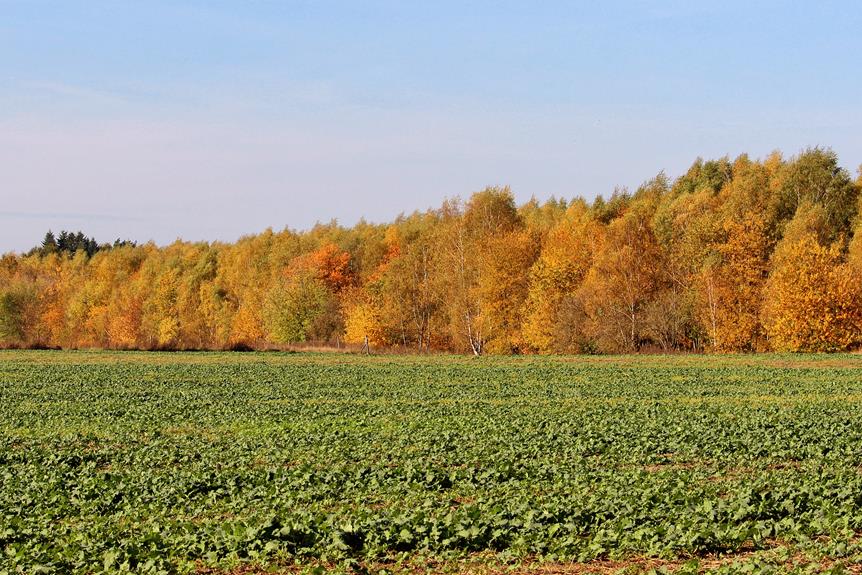In the realm of agriculture, the distinction between Rabi and Kharif crops holds immense significance. These two cropping seasons, with their distinct climate requirements and cultivation practices, shape the agricultural landscape.
As farmers and policymakers navigate the complexities of crop selection and management, understanding the disparities between Rabi and Kharif crops becomes imperative. This article explores the contrasts between these seasons, shedding light on the unique characteristics of each and providing valuable insights for those involved in the agricultural sector.
Key Takeaways
- Rabi crops are cultivated during the winter season and require low temperatures, while Kharif crops are sown at the beginning of the monsoon season and require a warm climate and abundant rainfall.
- Climate and seasonality play a crucial role in determining whether to cultivate Rabi or Kharif crops, with Rabi crops grown in regions with winter and spring seasons, and Kharif crops grown in regions with monsoon and autumn seasons.
- Crop rotation between Rabi and Kharif crops helps maintain soil fertility, improves land resource management, and prevents pests and diseases.
- Understanding the economic importance and market demand for agricultural products is crucial for stakeholders, as agriculture drives economic growth, employment, and food security, and market trends are influenced by the availability and quality of agricultural products.
Climate Requirements
The climate requirements for Rabi crops include low temperatures ranging from 14°C to 18°C, which are essential for their growth and development.
Rabi crops are typically cultivated during the winter season and harvested in spring. These crops include wheat, mustard, barley, green peas, and sunflower.
To meet the climate requirements, farmers often practice crop rotation and adopt specific agricultural practices. Crop rotation helps maintain soil fertility and prevents the buildup of pests and diseases, ensuring healthy crop growth.
Additionally, farmers employ techniques such as irrigation and mulching to provide the necessary moisture and protection for Rabi crops.
Adequate temperature and moisture levels, along with proper agricultural practices, contribute to the successful cultivation of Rabi crops and support sustainable farming practices.
Temperature Preferences
Maintaining the optimal temperature preferences is crucial for the successful cultivation of Rabi crops, as they require low temperatures ranging from 14°C to 18°C. This temperature adaptation is necessary for the proper growth and development of crops such as wheat, mustard, barley, green peas, and sunflower. To ensure the best results, farmers need to carefully monitor and control the temperature in their fields, providing the ideal conditions for these crops to thrive.
In addition to temperature adaptation, crop rotation is another important aspect of successful Rabi crop cultivation. Crop rotation involves the systematic planting of different crops in a particular field over a period of time. This practice helps to maintain soil fertility, control pests and diseases, and enhance overall crop productivity. By rotating Rabi crops with other crops such as Kharif or Zaid crops, farmers can effectively manage their land resources and achieve better yields.
Growing Season
Farmers should carefully monitor and adjust the irrigation schedule during the growing season to optimize crop yield and ensure the plants' healthy development. This is crucial for successful agricultural practices.
Proper irrigation helps provide the necessary amount of water to the crops, ensuring their growth and productivity. Monitoring the irrigation schedule allows farmers to adjust it based on factors such as weather conditions, soil moisture levels, and crop water requirements.
Additionally, incorporating crop rotation into the farming system can further enhance crop yield and promote sustainable agriculture. Crop rotation involves growing different crops in a specific sequence on the same piece of land. This practice helps prevent the build-up of pests and diseases, improves soil fertility, and reduces the need for chemical inputs.
Rainfall Dependency
Agricultural productivity in rain-fed areas is heavily influenced by the level of rainfall dependency, which determines the success and yield of crops. In order to mitigate the impact of erratic rainfall patterns, farmers have adopted various irrigation methods to ensure water availability for their crops.
These irrigation methods include:
- Traditional methods:
- Flood irrigation: Involves flooding the fields with water, which can lead to water wastage and soil erosion.
- Furrow irrigation: Water is distributed through channels or furrows, allowing it to seep into the soil slowly.
- Modern methods:
- Sprinkler irrigation: Water is distributed through sprinklers, reducing water wastage and providing uniform coverage.
- Drip irrigation: Water is delivered directly to the plant roots, minimizing water loss and maximizing efficiency.
The impact of irrigation methods on food security cannot be underestimated. By ensuring water availability, farmers can increase crop yields and reduce the risk of crop failure due to drought or inadequate rainfall. This, in turn, contributes to food security by improving the availability and accessibility of food for communities.
Major Crops in Rabi Season
The cultivation of major crops such as wheat, mustard, barley, green peas, and sunflower dominates the Rabi season, contributing to the agricultural diversity of the region. These crops require low temperatures to grow and are harvested in spring.
Uttar Pradesh, the largest wheat-producing state in India, benefits economically from the cultivation of these crops. Additionally, crop rotation plays a crucial role in maintaining soil fertility and preventing pest and disease outbreaks. Farmers practice crop rotation by alternating the cultivation of Rabi and Kharif crops.
This helps in improving soil health, optimizing resource utilization, and reducing the economic impact of crop failures. The Rabi season not only provides a range of agricultural products but also supports the livelihoods of farmers and contributes to the overall economic growth of the region.
Major Crops in Kharif Season
Significantly, rice and cotton are two major crops cultivated in the Kharif season, contributing to the agricultural productivity and economic growth of the region. The impact of climate change on these crops and the need for sustainable agricultural practices are important topics of discussion.
- Rice: Requires heavy rainfall and grows in waterlogged fields. The changing rainfall patterns due to climate change can adversely affect rice cultivation. Farmers need to adopt resilient practices to mitigate the negative impact and ensure a steady supply of this staple crop.
- Cotton: Thrives in rain-fed areas and is highly vulnerable to climate change. Rising temperatures, water scarcity, and pest infestations pose significant challenges to cotton farming. Implementing climate-smart agricultural practices, such as water-efficient irrigation and integrated pest management, can help sustain cotton production.
Addressing the impact of climate change on these crops and promoting sustainable agricultural practices are essential steps towards ensuring food security, economic stability, and environmental sustainability.
Harvesting Time
Farmers typically harvest rice and cotton during the Kharif season, ensuring a timely and efficient collection of these crucial crops.
Rice, being a staple food in many countries, is in high market demand. Cotton, on the other hand, is an important cash crop used in the textile industry. Harvesting these crops at the right time is essential to meet market demands and maximize profits.
Additionally, crop rotation is a common practice among farmers to maintain soil fertility and prevent the buildup of pests and diseases. By rotating between different crops in different seasons, farmers can ensure a sustainable and productive agricultural system.
This allows for a continuous supply of various crops throughout the year, meeting market demands and ensuring food security.
Regional Variations
Having different climatic conditions and geographical features, regions in India exhibit variations in agricultural practices and crop choices. This diversity is influenced by factors such as temperature, rainfall, and soil fertility.
Farmers in India practice crop rotation to maintain soil fertility and maximize yield. Crop rotation involves growing different crops in a specific sequence on the same piece of land. This helps in preventing the buildup of pests and diseases, improving soil structure, and replenishing nutrients.
In regions with high soil fertility, farmers may choose to grow cash crops like sugarcane or tobacco. In contrast, regions with poor soil fertility may focus on growing crops like pulses and oilseeds.
Understanding these regional variations and the importance of crop rotation is crucial for sustainable and productive agriculture in India.
Yield and Production
While considering the factors that influence regional variations in agricultural practices and crop choices, it is important to analyze the relationship between yield and production.
Yield refers to the amount of agricultural product obtained from a certain area of land, while production refers to the overall output of agricultural products.
The relationship between yield and production is crucial as it directly impacts the economic impact and market trends of a region. Higher yields can lead to increased production and subsequently contribute to the economic growth of a region.
Moreover, market trends are often influenced by the availability and quality of agricultural products, which are influenced by yield and production.
Therefore, understanding and optimizing the relationship between yield and production is essential for sustainable agricultural development and economic prosperity.
Economic Importance
One cannot underestimate the economic importance of agricultural production and its impact on regional development and market growth. Agriculture plays a crucial role in driving economic growth, providing employment opportunities, and contributing to food security.
The economic impact of agricultural production extends beyond the farming sector, as it stimulates demand for other industries such as transportation, manufacturing, and retail. Additionally, the market demand for agricultural products influences prices, trade, and investment decisions. Farmers and agribusinesses must constantly adapt to meet changing market demands and consumer preferences.
Understanding the economic impact and market demand for agricultural products is essential for policymakers, businesses, and individuals involved in the agricultural sector. By addressing these factors, stakeholders can make informed decisions that promote sustainable development and economic prosperity.
Frequently Asked Questions
What Are the Major Crops Grown During the Zaid Season?
Major crops grown during the Zaid season include pumpkin, cucumber, bitter gourd, and watermelon. These crops are cultivated using specific techniques suitable for the season, ensuring optimal growth and yield.
How Do the Temperature Preferences of Rabi and Kharif Crops Differ?
Rabi crops, such as wheat and mustard, prefer low temperatures (14°C to 18°C) and are harvested in spring. Kharif crops, like rice and cotton, thrive in rain-fed areas and rely on rainfall patterns.
Are There Any Regional Variations in the Cultivation of Rabi and Kharif Crops?
Regional variations in the cultivation of rabi and kharif crops can be influenced by factors such as the impact of climate change and government policies and subsidies. These factors shape the choices and practices of farmers in different regions.
How Does the Growing Season for Rabi Crops Differ From That of Kharif Crops?
The growing season for Rabi crops differs from that of Kharif crops in terms of climatic conditions. Rabi crops are sown in winter and harvested in spring, while Kharif crops are cultivated during the rainy season and rely on rainfall patterns.
What Is the Economic Importance of Rabi and Kharif Crops in India?
The economic importance of rabi and kharif crops in India lies in their role in ensuring food security and income generation for farmers. The government plays a crucial role in supporting these crops through policies and subsidies. Market demand for these crops varies based on consumer preferences and seasonal factors.
Conclusion
In conclusion, understanding the differences between Rabi and Kharif crops is crucial for farmers and policymakers in India.
The climate requirements, temperature preferences, growing season, rainfall dependency, and regional variations all play a significant role in determining which crops to cultivate during each season.
By carefully considering these factors and making informed decisions, farmers can maximize their yield and contribute to the overall food production of the country, ensuring a prosperous agricultural sector.

